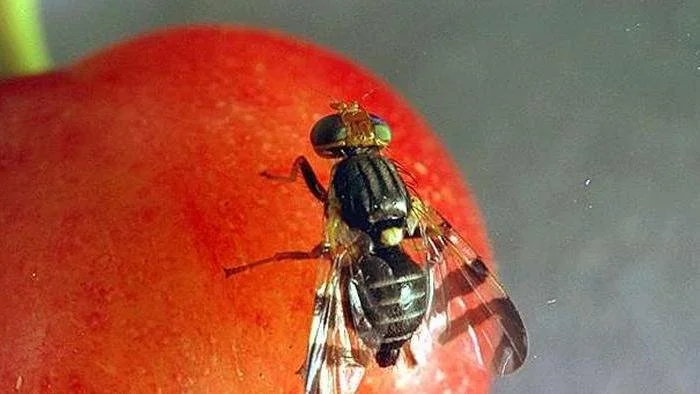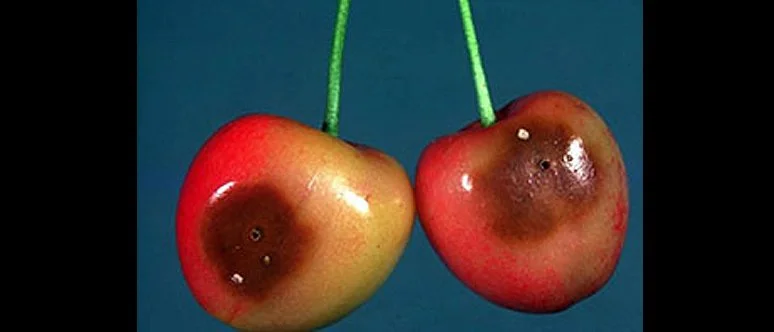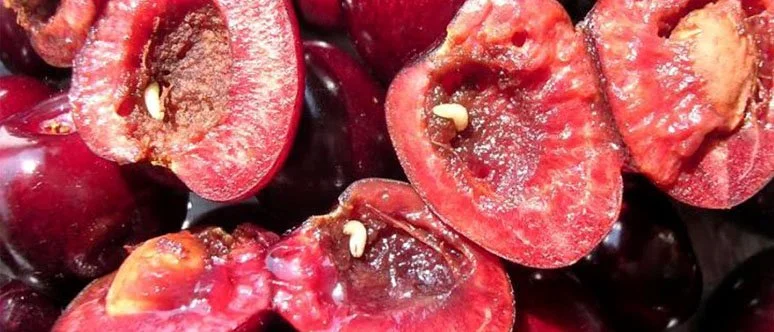The cherry fruit fly is a serious pest for cherries. The tiny insect lays eggs on ripening cherries, causing the fruit to turn brown, shrivel up, and become rotten.
For region-specific information, please contact your local Giving Grove partner. If you would like more information like this sent straight to your inbox, consider subscribing to The Serving, The Giving Grove’s quarterly newsletter.
Appearance:
Adult flies are mostly black with yellow to orange heads, and a large yellow dot is visible on their back.
Larva: Cream-colored, legless maggot with a tapered head and rounded tail
Pupae: light to dark brown and shaped like a large grain of wheat
Damage:
Peak emergence of adults and infestation of fruit occurs from mid-June to mid-July.
Damage occurs from the larva developing inside fruit and feeding on the flesh. The result is “wormy” fruit that is unusable.
Fruit will develop dark spots and may appear wilted or shriveled.
As the mature larvae emerge from the fruit, they may leave behind visible exit holes in the cherries.
Control & Treatment:
Hang sticky sphere traps and/or yellow card sticky traps in tree
Consider adding a “Feeding attractant” to the sticky sphere traps
Pick up early fruit drops biweekly to prevent larvae from entering the ground to pupate
Spraying the ground beneath an infected tree in fall with Beauveria bassiana – this fungus consumes the fly pupae
Use a trap tree such as a Dolgo Crabapple on the perimeter of the orchard.
Apply beneficial nematodes under the tree in early fall, which seek out the fruit fly pupae.
Sources: Utah State University Extension, USDA Dept. of Agriculture, Michael Phillips, “The Holistic Orchard”, and Patrick L. Byers, Horticulture Specialist




